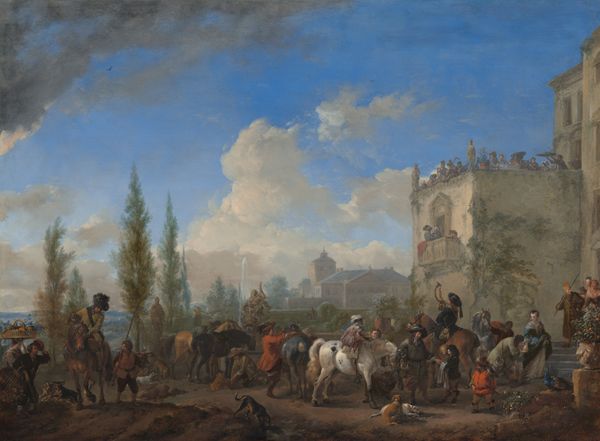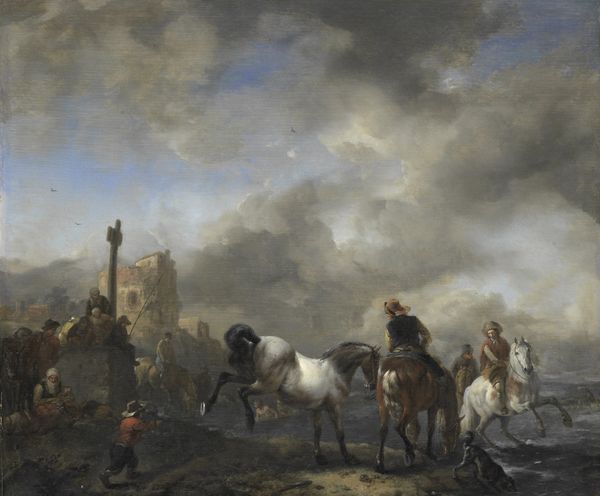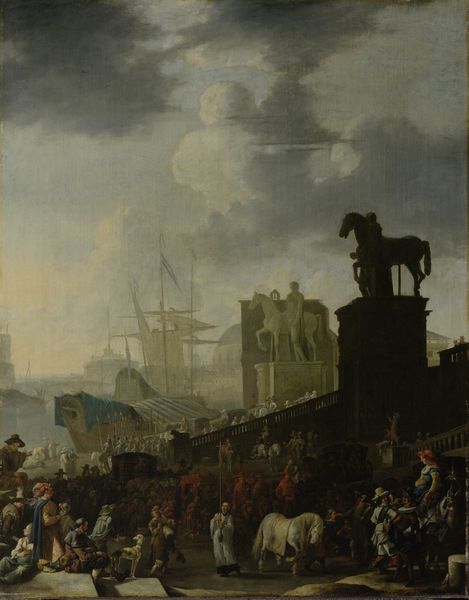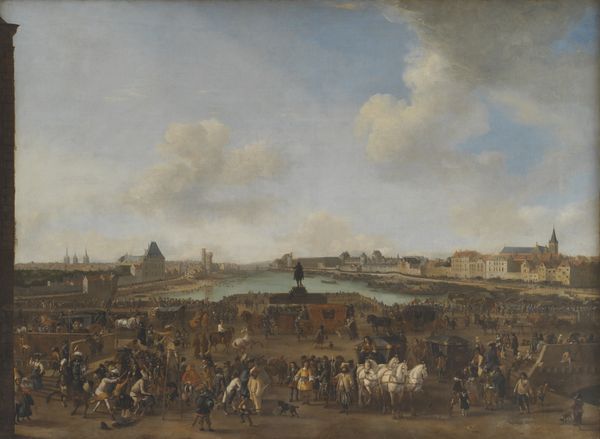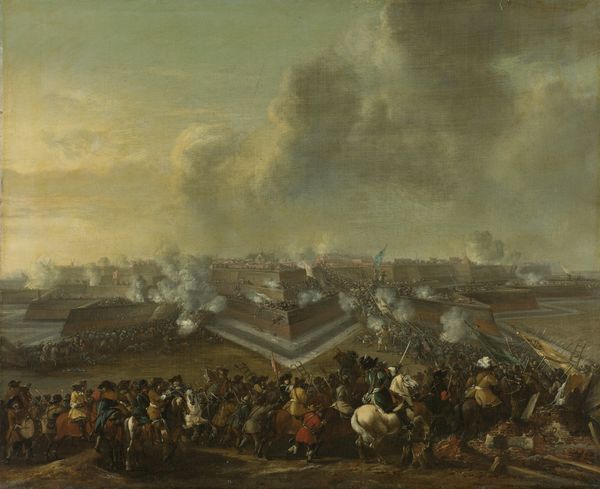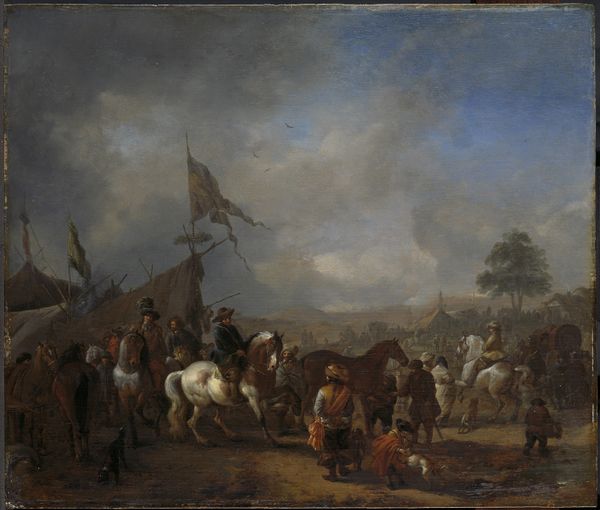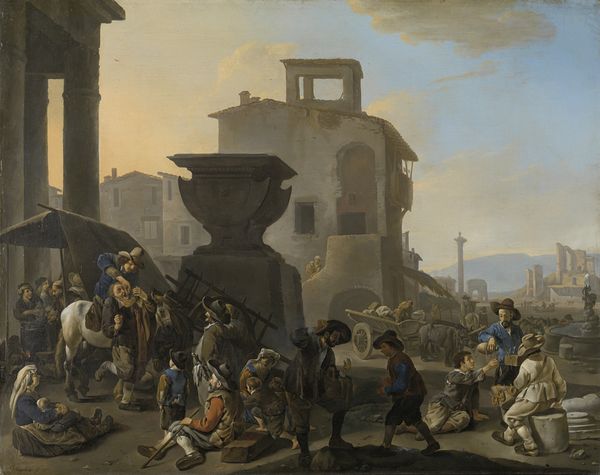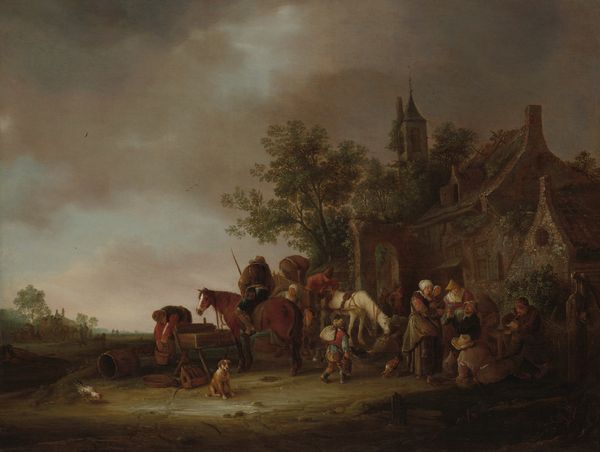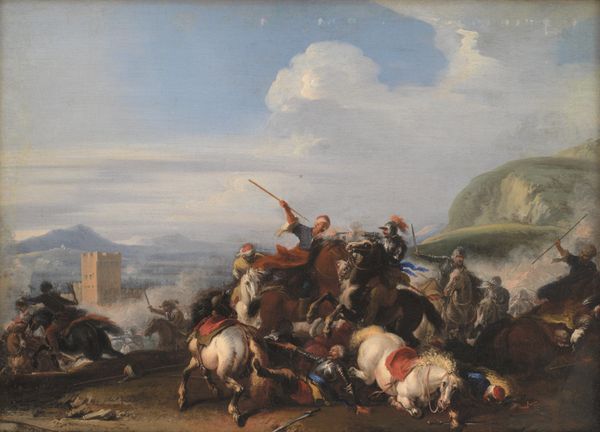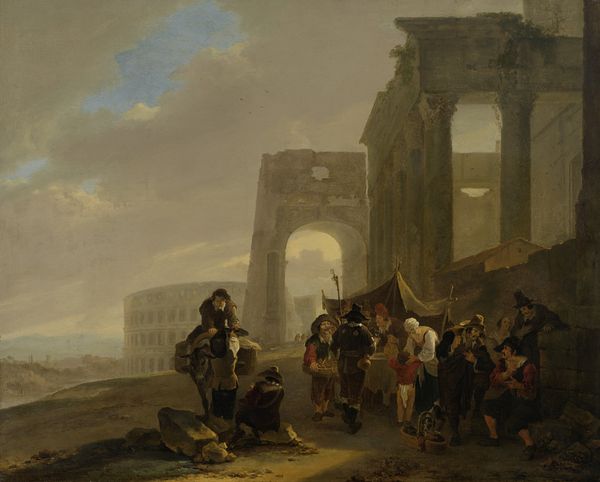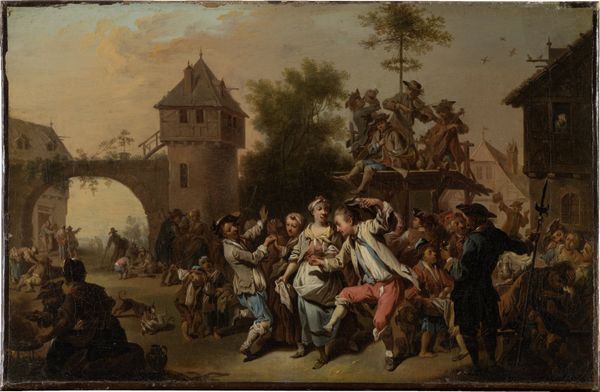
painting, oil-paint, canvas
#
baroque
#
painting
#
oil-paint
#
landscape
#
figuration
#
canvas
#
underpainting
#
history-painting
Dimensions: 83.7 cm (height) x 96.8 cm (width) (Netto)
Curator: The oil on canvas work before us is titled "Soldiers Looting and Burning a Convent" attributed to Willem Schellinks and thought to have been created sometime between 1642 and 1678. Editor: My initial impression is one of devastation. The smoke and dark palette create an immediate sense of loss and chaos. I wonder, what was Schellinks thinking when approaching such a violent theme? Curator: Indeed. While appearing to be a chaotic landscape, there is deliberate symbolism in the use of fire to purge the spiritual, and in the prominence given to plundering soldiers on horseback, which underscores their power and dominance. It's a historical painting laden with symbolic weight. Consider how convents held not just spiritual, but also considerable social and economic power. Editor: From a production standpoint, consider the labour involved. Linen canvas would have to be primed, stretched; pigments ground, mixed. I see subtle underpainting, suggesting a methodical construction of this scene of apparent disarray. It would take immense skill to give the smoke and burning buildings a feel of this texture, its weight. Curator: And those symbolic elements were vital to conveying a complex message. Notice the religious statues amid the turmoil. These convey how the ravaging is an assault on tradition, faith, and societal order. Schellinks understood how to use religious and military figures as more than literal stand-ins. They symbolize deeper, more volatile societal struggles. Editor: Do you think there’s a commentary here on the economics of warfare itself? It’s easy to miss the looted textiles, tableware... These items have a specific exchange value, which can finance further destruction. Who were his intended viewers, and did they purchase such war scenes to rationalize this economic devastation? Curator: The work certainly raises important questions about war as a commodity. But regardless of whether it served as commentary, I believe it serves to illustrate the artist's interpretation of a major socio-political rupture of the era. Editor: So, Schellinks, via material realities captured on canvas, provokes discussions not just of power but how systems enable exploitation of labour and value— Curator: And symbols. I am particularly compelled by Schellinks ability to condense a nuanced historical and cultural memory into a single composition. Editor: Material and memory interwoven. Thank you for offering that viewpoint.
Comments
No comments
Be the first to comment and join the conversation on the ultimate creative platform.
